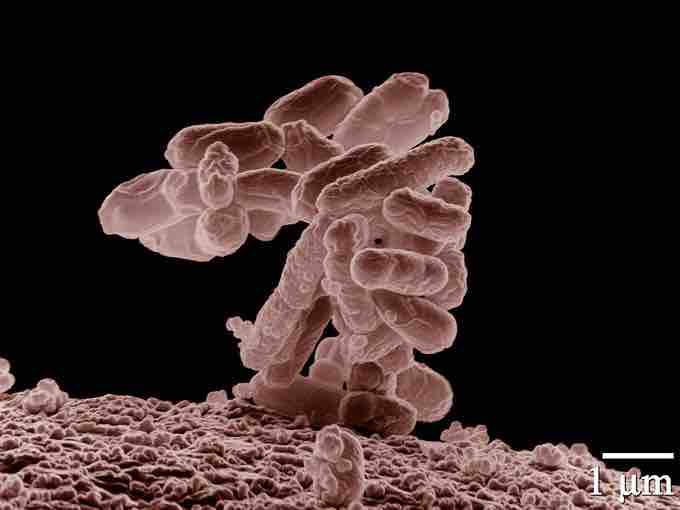The human body hosts thousands of different species of microbial organisms, known as the microbial flora or microbiota. Microbiota serve many functions in our body; most notable is the gut flora, crucial for the proper digestion of food, carbohydrate fermentation, and nutrient absorption. The gut flora in the human intestinal system has hundreds of species of microbes and over 100 trillion individual microbes; in comparison, the human body has around 10 trillion cells . Most of these microbes are bacterial and fungal. This is especially a problem when broad-spectrum antimicrobial agents are used, as antimicrobial treatments while helping to clear up pathogenic microbes from the body will often kill symbiotic bacteria. In addition, some microbial infections are due to translocation, the movement of advantageous bacteria to parts of the body where they might be harmful. An example is gut flora getting into the body's blood stream. The treatment of translocated or pathogenic bacteria may necessitate the use of antibiotics that will kill symbiotic bacteria. Antimicrobial agents which can kill beneficial gut flora can reduce the numbers of individual microbes or reduce the species of beneficial bacteria. In the case of the gut flora, this may impair the ability of a patient to properly metabolize food. If advantageous bacteria do not repopulate the intestine, this can lead to serious malnutrition problems.
In addition to serving a necessary function as gut flora due in metabolism of food, some microbiota in our bodies serve the function of keeping pathogenic microbes from inhabiting or dominating other flora at locations in our body. This is exemplified by Candida albicans, a yeast which is often found on humans. C. albicans is normally harmless, but when women take some antibiotics this can kill beneficial bacteria, specifically lactobacilli, in the vulvo-vaginal area. Without lactobacilli, C. albicans growth is not suppressed and can thus overgrow. This causes candidal vulvovaginitis, or yeast infections, a potentially painful infection of the vaginal mucous membranes by overgrown C. albicans. Yeast infections can be caused by antibiotics, as well as using aggressive topical cleaning agents such as detergents which again kill off beneficial lactobacilli allowing C. albicans to overgrow.
Fortunately there are antimicrobial agents that specifically target pathogenic bacterial species, which opposed to broad-spectrum treatments can reduce harmful effects on beneficial microbes. Sometimes the use of broad-spectrum antimicrobial agents is unavoidable; in these situations, consuming foods such as yogurt which contains beneficial bacteria can replenish the body's symbiotic microbes. In extreme cases microbes can be transplanted from a healthy individual to someone with whose symbiotic microbes have been compromised.

Gut bacteria
This is an electron micrograph, at 10,000X magnification. The oblong structures are Escherichia coli (E. coli), a symbiotic bacteria found in the human intestinal system.